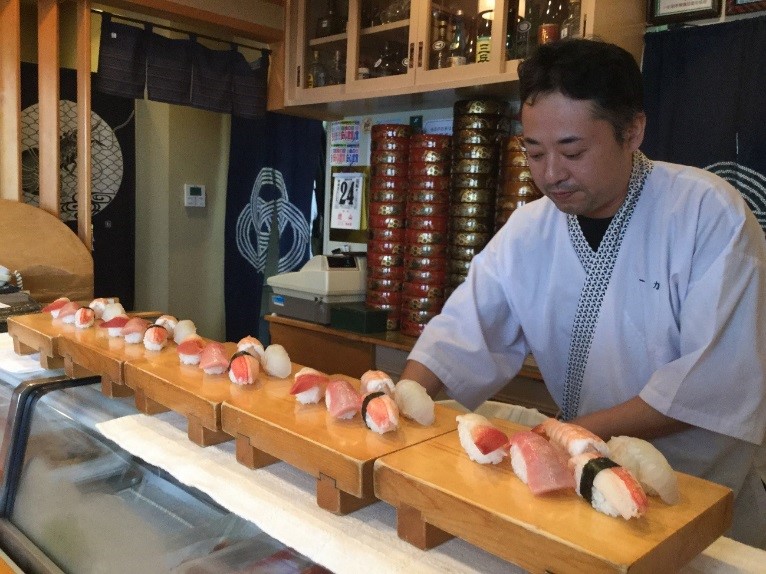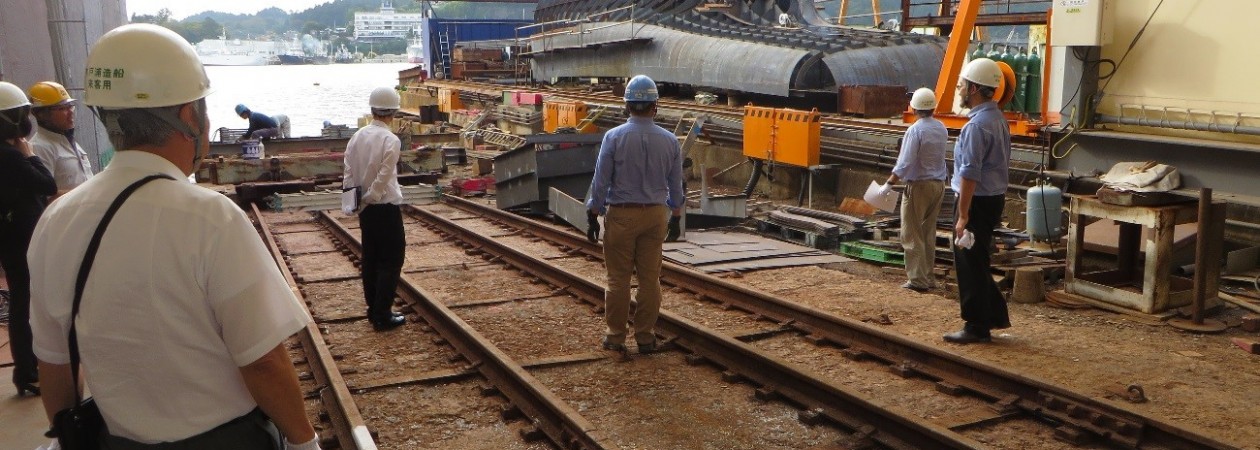Domo. This article is about the day trip up to Ichinoseki and Kesennuma on September 24 by Dr. Klaus Sinram of Deutsches Elektronen-Synchrotron (DESY), who was staying in Japan for five weeks under the Europe-Japan Accelerator Development Exchange Program.
Dr. Sinram popped up to Ichinoseki in the morning from Sendai, just half an hour away by bullet train, and was accompanied by Dr. Masakazu Yoshioka, Visiting Professor at Tohoku University and Iwate University and Professor Emeritus at KEK.
First, we visited NEC Network Products Ltd., located outside the east exit of Ichinoseki station. There was a presentation in English about the company and its state-of-the-art manufacturing, followed by a tour of the premises, which included looking at panels which show the limited damage at the plant incurred by the Great East Japan Earthquake of March, 2011. Production resumed just six days after the earthquake; a testimony to measures implemented over the years to reduce their impact. Dr. Sinram said he learned more about preventive procedures to ensure personal safety and protect sensitive equipment from damage due to earthquakes.

Mr. Tadashi Kikuchi (right) talks about the swift re-start in March, 2011
We then drove some 10-15 minutes to the South Iwate Research Center of Technology, a facility built by Iwate Prefecture and Ichinoseki City twenty years ago to support research and development by local companies and collaboration between them, academia and government. Among the items covered in the presentation was the Ichinoseki National Institute of Technology located next door, which trains young people to become globally-minded engineers. Interestingly it has also won national robot contests a number of times.
For lunch we went to a small sushi place, where the chef prepared it in front of us. While enjoying that and the green tea, Dr Sinram noted that the menu was in Japanese only. I mentioned that larger sushi chains nearby are equipped with touch screen ordering systems which have menus in English, Chinese and Korean, but also that if the ILC is realized and many researchers from abroad move to the region, that businesses of all sorts will cater for demand, and there is plenty of time yet to make those preparations.

The lunch line-up. “Itadakimasu!” (said before eating)
After lunch we drove to the port city of Kesennuma, Miyagi Prefecture, less than an hour east from central Ichinoseki on route 284, which at this time of year was flanked by full fields of rice about to be harvested. After viewing the bay in Kesennuma and a new berth under construction, we visited Kidoura Shipyard Co. Ltd, who have been building and repairing ships and vessels for over 80 years. They incurred significant damage by the tsunami of 2011, but teamed up this May with other shipbuilders and so on to form a new company, Mirai Ships, who together are scheduled to relocate to the new berth in 2018.
Mirai means future in Japanese, and they have positioned the ILC in the center of their long-term vision. They have extensive experience in building and welding techniques that will be necessary in assembling the ILC, and also in the use of large cranes, which will be needed to bring onto land ILC apparatus and equipment that are shipped in, and lower them underground into the ILC tunnel.
After touring the shipyard, it was time to head back to Ichinoseki station and Dr. Sinram and Dr. Yoshioka took the bullet train south; Dr. Sinram getting off at Sendai where in the evening he met with international residents over dinner and beverages.
It was great to show Dr. Sinram a few places that can contribute to the ILC should the project be given the green light, and he said he was impressed by how many people are working to make it happen. Come up to the Tohoku region and check out the Kitakami ILC candidate site and its surrounds – we would love to show you around and have you see with your own eyes the efforts being made.
Japanese
DESYのクラス・シンラム先生が一関を視察9月24日にドイツ電子シンクロトロン(DESY)のクラウス・シンラム氏と東北大学・岩手大学の吉岡正和客員教授が一関市と気仙沼市にある施設等を視察しました。
最初に一ノ関駅東口に近いNECネットワークプロダクツの工場を訪れ、最先端技術によるものづくりを紹介する英語でのプレゼンの後、工場の見学を行いました。東日本大震災による被害の様子が写っている写真パネルを見て、大震災からたった6日で再稼動できたことは過去の被災体験を活かした減災対策の効果です。クラウス氏が「減災対策に対する理解を深めた」とおっしゃいました。
次に岩手県南技術研究センターを訪れました。産学官による共同研究・共同開発を行うセンターの概要や、隣の一関工業高等専門学校の学生のものづくり活動についてのプレゼン等が行われました。
昼食を市内の寿司屋さんで食べた後、気仙沼市に移動しました。気仙沼港を視察し、木戸浦造船株式会社を訪れました。大震災による深刻な被害に遭いましたが、今年5月に新会社となるみらい造船を設立し、ILC計画を基礎とした新たな産業の創出も目指すということです。
今回はクラウス氏に北上サイトに来て見て頂きましたが、他にも沢山の外国人研究者にいらして頂きたいものです。



